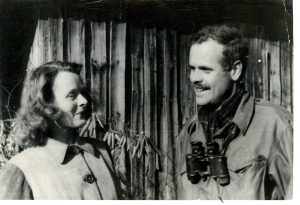1909 – 1990
Inducted 1996
1907 – 1998
Inducted 1996
“The Hamerstroms have led a life of adventure and public service. They leave the world a better place than they found it.”
Frederick Hamerstrom and Francis Flint described themselves as “a couple of Boston bluebloods.” Married in 1931, the Hamerstroms forged one of the most remarkable wildlife ecology teams. Research fellows under Aldo Leopold, the Hamerstroms have become best known for their work with prairie chickens at the Central Wisconsin Game Project near Neenah and the Prairie Grouse Research Unit in Plainfield. Their work was the basis for the conservation effort which saved the prairie chicken from extirpation in Wisconsin.
Frances and Frederick Hamerstrom are internationally renowned for their work with prairie chickens and raptors. Together they headed a research team that was credited with pinpointing the type of habitat needed by prairie chickens at a time when the bird was on the verge of extinction from Wisconsin.
Frances Flint was born in Boston, the only daughter in a wealthy family. She spent much of her childhood being raised by a governess. Frederick was born in New Jersey, but grew up in Winchester, Massachusetts. The two were married in secret in Orlando, Fla., in 1931. “The police were after us because we were traveling together and we weren’t married,” Fran told reporters. They had a more formal ceremony later that year.
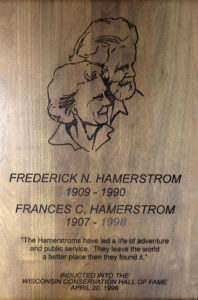 Frederick was a research fellow at Iowa State from 1932 to 1935 where he and Frances studied pheasant nesting, winter ecology of the bob-white quail and raptor food habitats. The couple made their first research contacts with prairie chickens in 1935 when Frederick became project game manager for the U.S. Resettlement Administration Central Game Project near Necedah, WI.
Frederick was a research fellow at Iowa State from 1932 to 1935 where he and Frances studied pheasant nesting, winter ecology of the bob-white quail and raptor food habitats. The couple made their first research contacts with prairie chickens in 1935 when Frederick became project game manager for the U.S. Resettlement Administration Central Game Project near Necedah, WI.
The Hamerstroms were research fellows at the University of Wisconsin-Madison under Aldo Leopold. In 1940, Fran became the only woman to earn a graduate degree under Leopold. A year later, Frederick became the only person to earn a doctorate under Leopold.
They continued their research on prairie chickens and sharp-tailed grouse in Wisconsin during the spring seasons of 1941 through 1943, and then again in 1947 and 1948 while Frederick was curator of the Edwin S. George Reserve. From 1944 through 1946, Frederick served in the US Air Force as an aviation physiologist, while Fran was a medical technician at Beaumont General Hospital.
The Hamerstroms’ were among the first to color-mark wild birds by using falconer techniques, which led to the discovery that cocks were territorial on booming grounds. Their research on prairie chickens provided tools for other ornithological studies. Frederick was employed by the Wisconsin Department of Natural Resources from 1949 through 1972 as project leader of the Prairie Grouse Management Research Unit headquartered in Plainfield. Fran was the assistant leader and only the second woman employed as a wildlife professional in Wisconsin.
Together and individually, the Hamerstrom published over 100 professional papers and many reviews of ornithological literature. Frances also published 10 books. Frederick was a highly skilled technical writer and editor. He edited the books that Fran wrote – the last one only two days before his death. He also edited technical papers for several journals and was the Principal Referee for Raptor Research.
Besides their research, writing and academic advising contributions, the Hamerstroms were actively involved in many state, national and international organizations. They continued environmental work throughout their lives, encouraging concern for the needs of wildlife and populations control.
Despite their international reputation, the Hamerstroms lived in a pre-Civil War home with few modern additions.
Videos
WPT University Place: Fran and Frederick Hamerstrom by Susan Tupper, 2017
Interview with Fran Hamerstrom speaking about Aldo Leopold
Frances Hamerstrom on David Letterman cooking wild game (start 23:20)
Resources
Hamerstrom’s Legislative Citation
Quotes from the Hamerstroms, excerpts from AFIELD: Portraits of Wisconsin Naturalists, Empowering Leopold’s Legacy, by Sumner Matteson
Frederick Hamerstrom Obituary, 1990
In Memorium: Frederick Nathan Hamerstrom from The Auk, 1991
In Memorium: Frances Hamerstom from The Auk, 1999
In Memorium: Frances Hamerstrom from The Passenger Pigeon, 1998
In Memorium: Frances Hamerstrom from the Journal of Raptor Research, 1998
List of books by Frances Hamerstrom
By nature, a naturalist, article by Paul G. Hayes for the Milwaukee Journal, 1994
Birds of Prey of Wisconsin, booklet by Frances Hamerstrom, 1983
Dead Trees Are Part of Our World, article by Frances Hamerstrom for Wisconsin Conservation Bulletin, 1975
Collection of Wild Food articles, by Frances Hamerstrom for Wisconsin Conservation Bulletin, 1970s
The Hamerstroms – Two People for the Birds, article by Bob Lattin from The Pointer (UW-Stevens Point campus newspaper), 1972
Photos
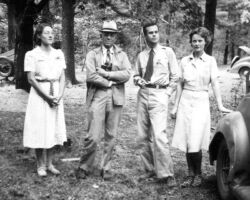
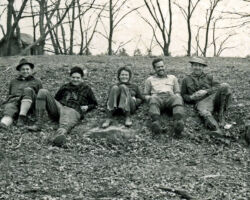
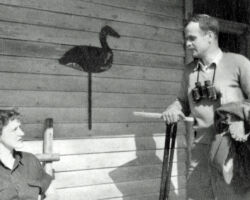
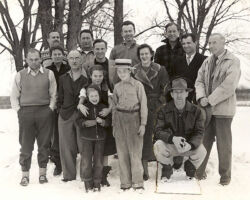
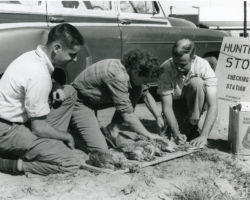
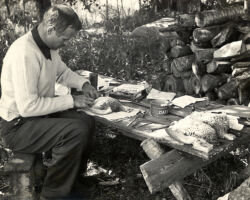
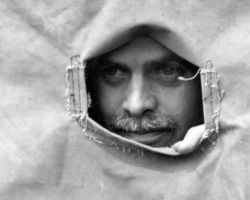
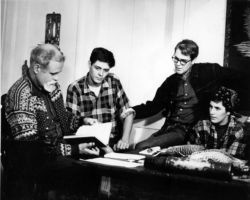
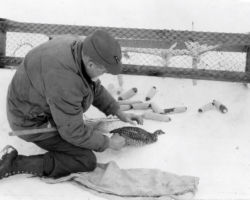
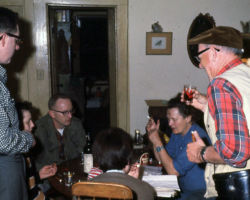
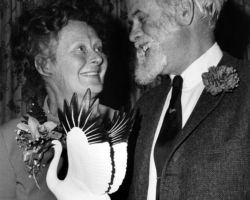
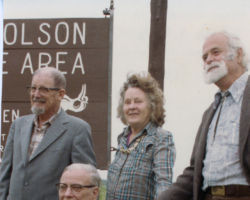
These images may be used under the Creative Commons Attribution-NonCommercial-NoDerivatives 4.0 International License.

